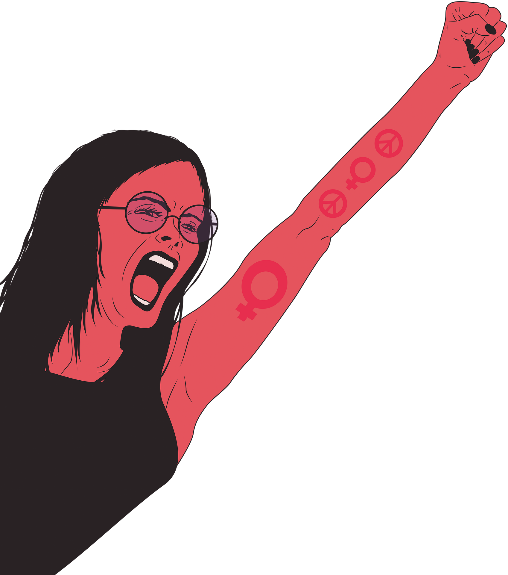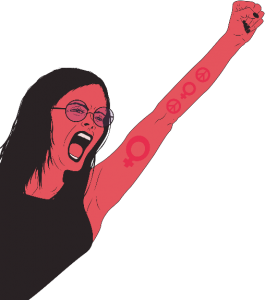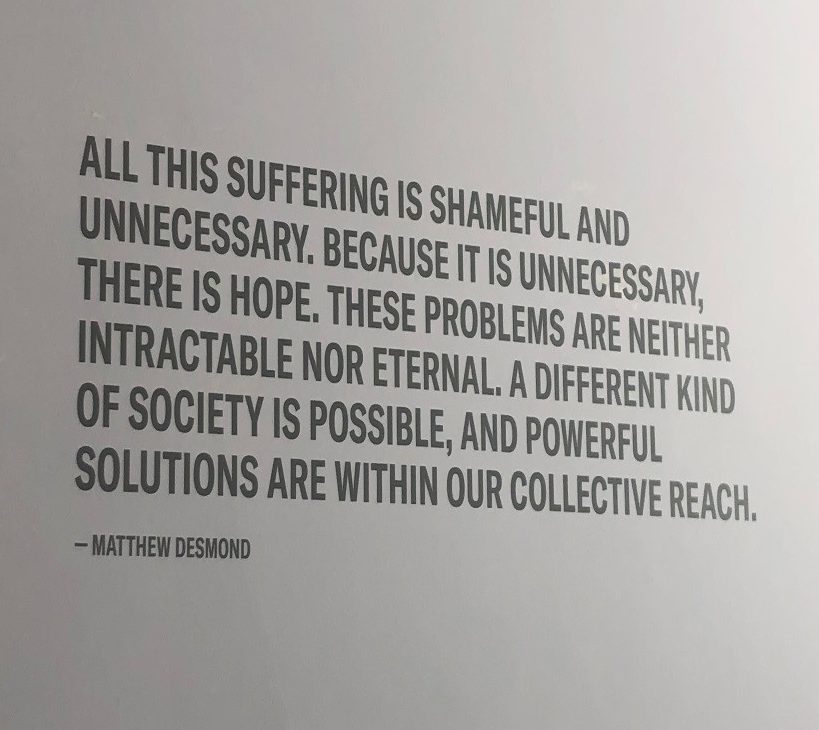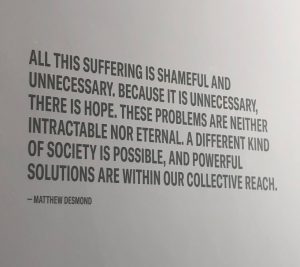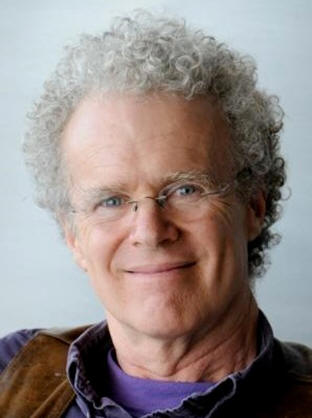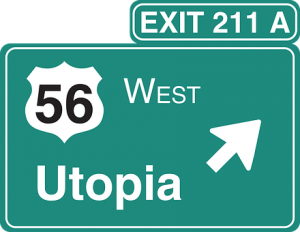
The #MeToo Movement rapidly spread around the world in 2017, eleven years after Tarana Burke in Alabama founded it. #MeToo brought unprecedented attention to the problem of sexual harassment and renewed efforts to combat it. It also posed new challenges and opportunities for sociologists conducting research on the topic, as well as for those working within their professional associations to address the behavior.
Earlier this year I had the opportunity to share my reflections on this topic with the District of Columbia Sociology Society. I discussed how the #MeToo movement was bringing renewed interest in three questions: (1) Who bears the risks and responsibility for addressing harassment? (2) How can organizations best promote gender equity?, and (3) How can workers express sexual agency in the #MeToo era? The third question is the subject of this article.
Sexual agency refers to how people experience sexual desire. As embodied human beings, people express sexual agency in the workplace (and elsewhere) and not exclusively in ways that are hostile or harassing. Some forms of sexual expression are consensual and pleasurable. A number of critics of the #MeToo movement are concerned that all sexual behavior has become suspect in the wake of #MeToo. This concern raises the question of how to respect workers’ sexual agency while also endeavoring to end sexual harassment.
The popular notion that there is a continuum of sexual violence illustrates how difficult it is to acknowledge sexual agency in the workplace. The sexual violence continuum is included in many sexual harassment training modules. Typically, the start of the continuum lists behaviors such as gender-specific jokes, sexual comments, and vulgar pictures—these are the least egregious forms of sexual violence. Seduction and inappropriate advances come next on the continuum, followed by threats and sexual bribery. Finally, at the far end of the continuum, physical assault and rape are examples of extreme forms of sexual violence.
Everyone can agree that the behavior on the far end of the continuum should never be tolerated. But should behaviors on the starting end of the continuum be outlawed? Some people may find pleasure in sexual comments and seduction, for example, and feel that these behaviors should not be equated with sexual harassment. This was the argument made last year in a letter signed by over 100 French women. They labelled the #MeToo movement “totalitarian,” claiming it had chilling effects on all forms of sexual expression, including innocent flirting and sexual bantering. They denounced the movement for serving the enemies of sexual freedom, including religious extremists and political reactionaries.
Similarly, some feminist critics fear that the #MeToo movement is taking a step backward by embracing an older Victorian notion of women’s sexual purity. They argue that nonconsenting behaviors should be forbidden, of course, but women should also be treated as sexual agents who can and do pursue erotic pleasure at work. Some who work in queer spaces, which may be experienced as liberating and not oppressive, share these feelings.
Implications for sociological researchers.
To incorporate sexual agency into our research, sociologists must pay more attention to how people actually decide what constitutes consensual and pleasurable sexual behavior on the one hand, versus harassment and assault on the other. Unfortunately, many studies of sexual harassment omit any consideration of sexual agency whatsoever. Many scholars rely instead on standardized questionnaires that pre-define what constitutes harassment, the most popular of which is the “Sexual Experiences Questionnaire” (SEQ), first developed by psychologist Louise Fitzgerald and her colleagues in 1988.
Here are some sample items:
- Have you ever been in a situation where a supervisor or coworker habitually told suggestive stories or offensive jokes?
- Have you ever been in a situation where a supervisor or coworker attempted to establish a romantic sexual relationship with you despite your attempts to discourage him?
- Have you ever been in a situation where you felt you were being subtly bribed with some sort of reward (e.g., preferential treatment) to engage in sexual behavior with a coworker?
- Have you ever been in a situation where you actually experienced negative consequences for refusing to engage in sexual activity with a coworker?
- Have you ever been in a situation where a coworker made unwanted attempts to stroke or fondle you (e.g., stroking your leg or neck, touching your breast, etc.). (Fitzgerald et al. 1995, p. 428)
This questionnaire is the current gold standard for conducting research on sexual harassment in the workplace.
The recent National Academies of Sciences report on sexual harassment explicitly endorses the SEQ, calling it “the most widely used and well-validated instrument available for measuring sexual harassment” (2018, 170).
Looked at from the perspective of sexual agency, however, the survey appears one-sided. Implied in these measures is the notion that all sexual behaviors are harmful. These items are also heterosexist: men are predators; women are victims (meanwhile Tarana Burke insists that the #MeToo movement is for all survivors). Most importantly, this research lets the expert decide what is and is not sexual harassment. In other words, these measures deny sexual agency to respondents.
What happens when you let workers decide what harassment is? Research shows that workers draw boundary lines at work between three different kinds of behavior: (1) pleasurable and welcomed sexual behaviors, (2) sexual behaviors they are willing to tolerate, and (3) sexually oppressive and harassing behaviors. These subjective definitions do not necessarily map onto the legal definitions of sexual harassment or the items on the SEQ. Instead, workplace context matters. In highly sexualized jobs in the service sector, for example, workers may tolerate sexual objectification because they understand it as part of their job description, while in other jobs, the same behavior may be experienced as demeaning and harassing.
In studies conducted in the U.S. before the #MeToo movement, my coauthors Patti Giuffre, Kirsten Dellinger, and I found that workers were willing to label behaviors as sexual harassment only under one of these four conditions:
1.If it is perpetrated by an individual boss against an individual employee.
2.If it is perpetrated by an individual of a different race, social class, or sexual orientation.
3.If it violates the norms of the work group.
4.If it has a severe impact on the victim.
Experiencing one of these conditions does not mean that a worker will make a formal complaint of harassment. Rather, under these four conditions workers expressed a willingness to define unwanted sexual behaviors as harassment.
Workers tolerated—and in some cases even enjoyed—similar behaviors under different conditions (e.g., when perpetrated by a peer of the same race, class, and sexual orientation—thus potentially reinforcing social inequality). Future scholarship should document how workers draw boundary lines in the #MeToo era, with an eye to understanding how these definitions privilege some groups while targeting others for punishment.
Implications for professional societies
The National Academies of Sciences report assigns professional societies a central role in the fight against sexual harassment in the academy. However, incorporating the notion of sexual agency in sexual harassment policy is a challenge for professional societies. How might they develop a policy that lets members define for themselves what constitutes acceptable, tolerable, and harassing behavior?
Even sociologists will not agree on these definitions. For instance, some members encourage and celebrate a broadening of acceptable sexual expression at our conferences to make the ASA more open and inclusive, while these behaviors may be offensive to other members. So who gets to draw the boundary lines? In the work world, employers typically decide. They institute policies that define acceptable and unacceptable sexual expression, by, for example:
- Controlling and/or mandating specified forms of sexual expression at work (e.g., dress codes, aesthetic requirements)
- Outlawing sexual expression (e.g., anti-fraternization policies)
- Imposing sex segregation at work (e.g., relegating men and women to different jobs and locations within a company).
All of these are flawed responses that do not address or even acknowledge sexual agency. They remind me of parents’ efforts to control their teenagers’ sexuality. Instead of this top-down approach, professional societies that are democratically structured and member-focused are committed to undertaking a more collaborative process. This entails promoting a sociological understanding about sexual harassment and encouraging dialog about the issues—efforts that ASA is currently undertaking. Moving forward, it will be important to engage the membership at all levels—including in sections and on committees. The first principle of #MeToo should guide this effort: building a community of support for survivors of sexual abuse.
The Promise of #MeToo
The #MeToo movement brought renewed attention to the problem of sexual harassment. As an online platform, it acts as a megaphone, uniting the voices of vast numbers of individual workers who have experienced abusive treatment at work. In a very short time, it has become a powerful force in society, inspiring fresh dialog about an incessant social problem. This is a world-changing moment that no one could have predicted. As Catharine MacKinnon remarked recently, “Women have been saying these things forever. It is the response to them that has changed.”
We are now having a public conversation about survivors of sexual assault, finding new ways to support their efforts to heal, and building new community awareness and commitment to fighting sexual harassment. #MeToo is an opportunity for sociologists to enhance our understanding of sexual harassment and for professional associations to promote new programs and policies to address it. In this article, I have argued for an approach that respects workers’ sexual agency. This will not be an easy task, but it is a goal worth pursuing.
References
Fitzgerald, Louise F., Michelle Gelfand, and Fritz Drasgow. 1995. Measuring sexual harassment: Theoretical and psychometric advances. Basic and Applied Social Psychology 17: 329-43.
National Academies of Sciences, Engineering, and Medicine. 2018. Sexual Harassment of Women: Climate, Culture, and Consequences in Academic Sciences, Engineering, and Medicine. Washington, DC: The National Academies Press. doi: https://doi.org/10.17226/24994.
For Further Reading:
American Sociological Association. 2019. ASA Anti-Harassment Resources. http://www.asanet.org/asa-anti-harassment-resources (retrieved April 7).
Bennett, Jessica. 2018 (June 28). After #MeToo the Ripple Effect. New York Times. https://www.nytimes.com/2018/06/28/arts/what-is-next-metoo-movement.html
Burke, Tarana. 2018 (April 13). This is a movement, not a moment. https://variety.com/2018/biz/news/viola-davis-tarana-burke-power-of-women-1202751993/
Dellinger, Kirsten, and Christine L. Williams. 2002. “The Locker Room v. the Dorm Room: The Cultural Context of Sexual Harassment in Two Magazine Publishing Organizations,” Social Problems 49: 242-57.
Giuffre, Patti A., and Christine L. Williams. 1994. “Boundary Lines: Labeling Sexual Harassment in Restaurants,” Gender & Society 8: 378-401.
Kipnis, Laura, with Dorothy Wickenden. 2018 (Feb. 5). Laura Kipnis on the State of #MeToo. The New Yorker. https://www.newyorker.com/podcast/political-scene/laura-kipnis-on-the-state-of-me-too
MacKinnon, Catharine. 2018 (February 4). #MeToo has done what the law could not. New York Times. https://www.nytimes.com/2018/02/04/opinion/metoo-law-legal-system.html
Safronova, Valeriya. 2018 (January 9). Catherine Deneuve and Others Denounce the #MeToo Movement. New York Times. https://www.nytimes.com/2018/01/09/movies/catherine-deneuve-and-others-denounce-the-metoo-movement.html
Tambe, Ashwini. 2018. Reckoning with the Silences of #MeToo. Feminist Studies 44(1): 197-203.
Tolentino, Jia. 2018. The Rising Pressure of the #MeToo Backlash. New Yorker (Jan. 24). https://www.newyorker.com/culture/culture-desk/the-rising-pressure-of-the-metoo-backlash.
Tortorici, Dayna. 2018. In the Maze: Must history have losers? N plus one magazine Issue 30: Motherland. https://nplusonemag.com/issue-30/the-intellectual-situation/in-the-maze/
Traister, Rebecca. 2017. This Moment Isn’t (Just) About Sex. It’s Really About Work. https://www.thecut.com/2017/12/rebecca-traister-this-moment-isnt-just-about-sex.html.
Williams, Christine L. 1998. “Sexual Harassment in Organizations: A Critique of Current Research and Policy.” Sexuality & Culture 1: 19-43.
Williams, Christine L., Patti A. Giuffre, and Kirsten Dellinger. 1999. “Sexuality in the Workplace: Organizational Control, Sexual Harassment, and the Pursuit of Pleasure,” Annual Review of Sociology 25: 73-93.



